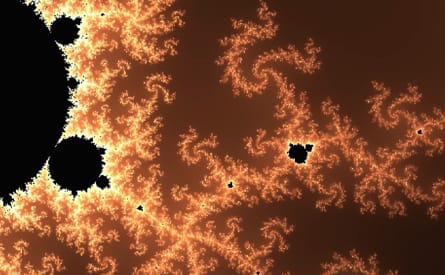
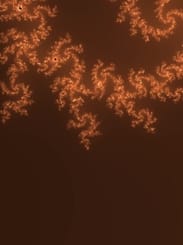
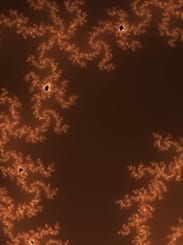
LSD (Lysergic Acid Diethylamide -25)
Proving date: 1999
Proving completed by: Misha Norland and The School of Homeopathy
Common name: LSD
Download: Full proving LSD (Lysergic Acid Diethylamide-25)
Download: Proving rubrics
LSD (Lysergic Acid Diethylamide-25)
About LSD
The most psychoactive hallucinogenic known –
breakdown of the ego.
The patient’s story is likely to focus upon the traumatising loss of an idealised vision of flawless beauty. Suddenly everything has changed from living in paradise (fluffy and pink) to being life threatening, from a spirit-like existence to battling with the impenetrable density of gross material existence. The beautiful dream has been threatened by disintegrative forces. It is as if childhood had been lost, replaced by a menacing world in which personal nightmares had transformed into terrifying reality.
The defining experience is about losing form – shapes shift, sensory impressions flow into one another, ever changing pictures display themselves before the 'screen' of heightened awareness, and at the core of being, the sense of ego identity may fall away. This experience while being most beautiful, sublime and transcendent, leaves an individual vulnerable, open to invasion,and may transform into feelings of paranoia.
LSD
LSD is produced from lysergic acid, an alkaloid found in the fungus ergot, Claviceps purpurea that grows on grains and wild grasses. From the early Middle Ages the growth of the fungus in poorly-stored grains caused mass outbreaks of ergot poisoning (ergotism). Kernels infected with the fungus develop curved brown pegs (sclerotia) that grow in place of the grains.
LSD has been classified an entheogen as it can bring about intense spiritual experiences, giving users a sense that they have come into contact with a greater spiritual or cosmic intelligence. David Nutt is quoted in Nature, 11 April 2016,
"We gave LSD to volunteers who were already experienced with the drugs and took their brain scans over 8 hours in the lab in Cardiff, UK, in 2014. In one study we looked at blood flow in different parts of the brain using functional magnetic resonance imaging, and at electrical activity using magnetoencephalography. We found that under LSD, as compared to placebo, disparate regions in the brain communicate with each other when they don’t normally do so. In particular, the visual cortex increases its communication with other areas of the brain, which helps to explain the vivid and complex hallucinations experienced under LSD, and the emotional flavour they can take. On the other hand, within some important brain networks, such as the neuronal networks that normally fire together when the brain is at rest, which is sometimes called the 'default mode' network, we saw reduced blood flow – something we’ve also seen with psilocybin – and that neurons that normally fire together lost synchronisation. That correlated with our volunteers reporting a disintegration of their sense of self, or ego. This known effect is called 'ego dissolution': the sense that you are less a singular entity, and more melded with people and things around you."
Mythology
Saint Anthony of Egypt: Ergotism was also known as 'St Anthony's Fire', named after the 3rd century Christian anchorite, a patron of monks, healers, domestic animals and fire. He lived to a great age of 105, tormented by violent encounters with hideous demons and temptations of the most beautiful women and sensual delights. The legend has its roots in the mists of time, recording the saint's descent into the flames of hell to steal a glowing spark of fire for humanity. The torments of St Anthony's Fire are intense fiery inflammation of the skin and blackening of the limbs, along with seizures and devilish hallucinations. At nightfall on 16 January, tradition has it that bonfires are lit in honour of St Anthony.
History
Religion and the Arts: Many of the World's tribal people rely upon natural drugs to induce religious experience and hallucinogenic drugs have a prime place in shamanic work. LSD has been used extensively to evoke religious experiences and intensify sexual ecstasy. Temptations and torments have been favourite subjects for artists and writers, such as Bosch and Flaubert.
LSD–25 was first synthesised: by Dr Albert Hofmann in 1938. It is the most potent psychotropic substance known, a mere sixth of a milligram being sufficient to induce and maintain an altered state for up to 8 hours.
Military and the CIA: LSD was experimented with as a 'truth drug'. In 1942, General Wild Bill Donovan, the Chief of OSS (forerunner of the CIA), set out to find a speech-inducing drug. Many of the great advocates of LSD, including Ken Kesey and Allen Ginsberg, were introduced to hallucinogens at CIA sponsored-research programmes. In a typical LSD volte face, it was thought that agents should take LSD if they were captured so that they would babble gibberish and be difficult to interrogate. Research projects continued until 1966 but the CIA and military never found a use for LSD.
Captain Alfred Hubbard: was a senior officer in the OSS who had contacts in politics, business and spying. In 1951 he took his first acid trip and over the next few years became known as the 'Johnny Appleseed of LSD', the great proselytiser of the drug. Hubbard and Dr Humphry Osmund, staff physician at a Swiss hospital where alcoholics were treated using LSD, believed it could transform the belief systems of World leaders and so bring about World peace. Osmund, in a letter to Aldous Huxley (a convert of Hubbard's), coined a a term for hallucinogens, 'To fathom hell or soar angelic; Just take a pinch of psychedelic'. Hubbard introduced LSD to Hollywood.
Millbrook commune: Timothy Leary, a psychologist and lecturer at Harvard, after an encounter with magic mushrooms in 1960, began to investigate the religious experience of LSD, with Richard Alpert. Later, they set up Millbrook to investigate the psychedelic phenomenon. Leary believed LSD tuned into genetics and could connect with the evolutionary program of DNA; that God is the DNA code. Artists, philosophers and musicians passed through Millbrook including Ginsberg in 1960 and Arthur Kleps, founder of the Neo-American Boohoo Church. Although possibly apocryphal, it is said the Maharishi requested a trip from Leary and that, after the experience, he remarked, 'It is like going on a meaningful walk'.
Merry Pranksters: Ken Kesey, author of One Flew over the Cuckoo's Nest (1967), took mescaline through a research program in a veteran's hospital. His ranch became an acid commune. He and his friends – the Merry Pranksters – travelled the US and visited Millbrook but Leary refused to meet Kesey. The East Coast academics and West Coast crazies shared little in common.
Oracle group: Experimenters, musicians, protesters, anarchists and drop-outs gravitated towards Haight Ashbury in San Francisco, as it evolved into a psychedelic city state. August Owsley Stanley III, the main supplier of LSD
during the mid '60s, used his power to maintain quality of supplies and keep the price at $2 a trip. The Oracle, a counter-culture magazine, and the Psychedelic Shop, were supported by Owsley who organised the Human Be-In at Golden Gate Park – a culmination of everything that had been brewing in Haight Ashbury – and ushered in the year of the Summer of Love.
Diggers: In 1966, a street theatre group set up the 'free' store and during 1967, provided food and other supplies to thousands that flooded into the area. Despite shunned publicity, having no leaders and being anonymous, they developed an efficient, well-run and immensely-successful system. They hoped it would be the model of a new anarchist society.
Hippy phenomenon: The Merry Pranksters organised the Trips Festival. Hippydom was established in June 1967, with the Monterey Pop Festival. That Summer, Sgt Pepper's Lonely Hearts Club Band was released; a new type of art in which pictorial art and music became one. In 1968–9 the dream seemed to collapse. LSD became illegal, the Mafia moved into Haight Ashbury and took over the drugs trade,and local authorities cracked down. Riots at the Democratic Convention led to bloodshed. Woodstock was the last real manifestation of the hippy ideal and the Altamont Festival descended into violence and murder. Charles Manson – well-known in Haight Ashbury – was arrested for murder, and it seemed he had been more successful than the CIA in using LSD to brainwash his agents.
Medicinal uses: The form used medicinally is the ergot of rye (Secale cornutum). LSD was used in hospices as an aid for the dying as well as being used in psychotherapeutic settings, and by midwives as an ecbolic to precipitate childbirth.
The proving
Misha Norland bought the material for the proving in Los Angeles in 1970. 250 micro-grams of pure LSD-25 was run up into the 30th potency in the Hahnemannian, single vial manner. This potency lingered in Misha’s medicine cabinet for almost 30 years until the day of the proving.
During the proving, many spoke of the experience as a journey; a trip. The LSD experience may be so far out, it is out of sight. It is the extreme and ‘other worldly’ nature of the LSD-induced state which is either thought of as losing form or dangerously hallucinogenic – the ‘danger’ being related to the disorientating effects of the experience. One of the provers said she had been profoundly changed by the proving and now felt vulnerable, exposed and uncertain. and paranoia are often unearthed during a trip. Letting go, breaking down, and losing form, are part of the LSD experience. This may seem as meaningless as a psychotic episode or as meaningful as the Maharishi’s meaningful walk. To put it metaphorically, the ‘ghost’ which inhabits the heart of LSD is no-thing. The LSD trip informs us that consciousness is configured around the primordial void (as the Buddhists have it). The void is also primordial fullness and contains all manner of things in their unmanifested state. Since they are unmanifested, the primordial state may also be described as empty. Trippers have a bad time if they cannot sustain a view of this emptiness because without a 'still point in the turning world', as T. S. Eliot put it, there are a myriad 'realities' each of which is equally plausible. Likewise, the earthiness of 'I' or ego, loses its hold. The person is as a child in their innocent youth again. In this magical domain, timelessness grants freedom to explore the terrain of enhanced nature, where we are freewheeling forever robed in delight.
Surrendering any aspect of ego is a considerable task if undertaken consciously. It is appropriately embarked upon as a spiritual or psychotherapeutic quest. The beat poet Alan Ginsberg, trying to emulate the visionary William Blake, had this to say, 'I spent about 15 years trying to recreate the Blake experience in my head, and so wasted my time. It's just like somebody taking acid and wanting to have a God trip and straining to see God, and instead, naturally, seeing all sorts of diabolical machines coming up and around him, seeing hells instead of heavens. So I did finally conclude that, the bum trip on acid as well as the bum trip on normal consciousness, came from attempting to grasp desiring a preconceived end, a preconceived universe, rather than entering a universe not conceivable, not even born, not describable.' This applied also to a number of provers who found that straining to find or do something often resulted in a period of alienation and apprehension, whilst remaining open and unprejudiced, brought out the important information and function without as much of the pain. One prover, alone in their own hell, wrote, 'By the end of the 2nd month I did not feel that I was proving any more, but felt that it had left me in a waste land. I felt that a war had been waged and I was trying to deal with the repercussions of it all'.
The central theme about losing form applies to all aspects of the trip. Visually, shapes shift and transform, synaesthetically, sensory impressions flow into one another, imaginally, ever changing pictures and rush of thoughts display themselves before the 'screen' of heightened psychic perceptions, and at the core of being, the sense of ego identity may fall away.
Download: Full proving LSD (Lysergic Acid Diethylamide-25)
Download: Proving rubrics
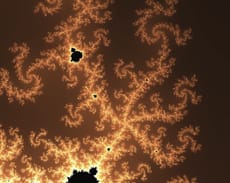
Enhanced nature - Losing form - Timelessness - Freewheeling - Psychic - Innocent youth - Earthiness - Alienation - Suspicion - Apprehension - Hell
Proving Themes
Systematic (IUPAC) name
(6aR,9R)-N, N-diethyl-7-methyl-4,6,6a,7,8,9-hexahydroindolo-[4,3-fg]quinoline-9-carboxamide
Clinical data
Pregnancy category
US: C (Risk not ruledout)
Legal status
AU: Prohibited(S9)
CA: Schedule III
DE: Anlage I
NZ: Class A
UK: Class A
US: Schedule I
UN: Psychotropic Schedule�I
Dependence liability Low
Addiction liability: None
Routes of Administration:
Oral, sublingual, intravenous, ocular, intramuscular P
Composition
LSD is known as the hallucinogenic party drug but in current studies at Harvard University and the University of California and San Francisco they have been studying the medical use for LSD in psychiatric applications and for treating chronic headaches. In turn Switzerland are investigating the possible therapeutic effects of LSD, by the intense anxiety experienced by patients with life threatenting illnesses.
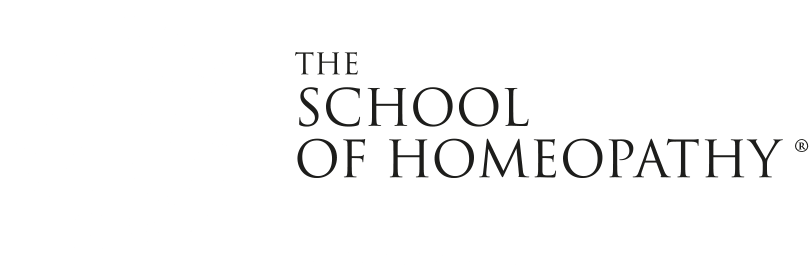
.jpg)
